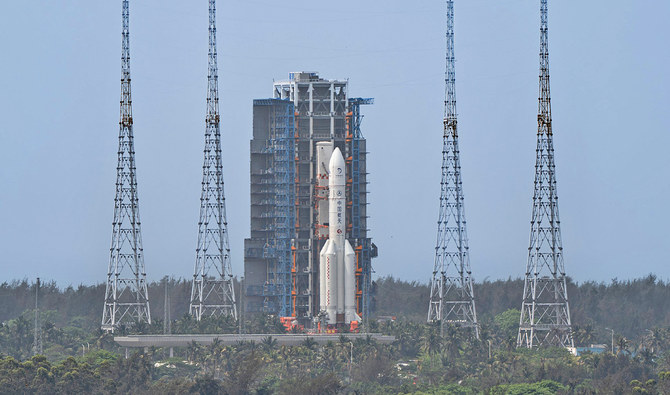Pakistani satellite destined for orbit in China's high-stakes moon mission is a "historic moment."
- byAdmin
- May 2, 2024
- 1 year ago

ISLAMABAD The creators of "ICUBE-Qamar" (ICUBE-Q), a cube satellite that will make Pakistan's first lunar landing as part of China's Chang'e-6 mission tomorrow, Friday, have called it a "historic moment" that would pave the way for more South Asian countries to launch deep space missions in the future.
The goal of Chang'e 6, a robotic lunar exploration project being developed by China and Pakistan, is to return soil and rock samples to Earth for the first time, as well as undertake Beijing's second sample return mission. The samples, which will include material expelled from the lunar mantle, will be utilized to shed light on the solar system's, the moon's, and Earth's past.
It is anticipated that the mission's main phase will run for roughly 53 days. The spacecraft bears the name Chang'e, after the Chinese moon goddess.
The satellite was developed by about 100 students from Pakistan's Institute of Space Technology (IST). It is expected to be launched into lunar orbit on Friday, May 3, 2024, at 12:50 PM PST from the Wenchang space launch site in Hainan, China.
“This is Pakistan’s first deep space mission which is indeed a historic moment and following that maybe in the future other deep space missions can be planned,” Khurram Khurshid,the co-lead on the satellite project and dean of IST's department of electrical engineering and computer science, told Arab News.
The China National Space Agency (CNSA) approved Pakistan's application to construct the satellite based on designs provided by eight member nations of the Asia-Pacific Space Cooperation Organization (APSCO).
“In the first month of 2022, out of all the proposals from the APSCO member states, the Chinese space agency thoroughly evaluated and selected one, which happened to be ours which was a significant moment for us as our proposal was chosen in deep space mission.”
With assistance from Pakistan's National Space Agency, SUPARCO, staff members and students from the Institute of Technology Pakistan (IST) worked in partnership with Shanghai Jiao Tong University (SJTU) in China to design, construct, and qualify the ICUBE-Q satellite.
“Along with faculty members, around 100 students contributed to various aspects of the satellite, including electrical engineering for electronics, aerospace engineering for control systems, computer science for software, and mechanical/materials engineering for identifying materials suitable for the moon’s harsh environment,” Khurshid said.
According to the official, the ICUBE-Q is equipped with two cameras as part of its payload to capture photographs of the lunar surface that will be sent back to Earth for study.
According to Khurshid, it needed two years of nonstop effort by students and researchers following selection in 2022 to finish the project on time.
“The design and development of the satellite were finished approximately eight months ago after rigorous qualification tests, some conducted in-house and others by SPARCO,” he said.
"After extensive qualification testing, some of which were carried out internally and others by SPARCO, the satellite's design and development were completed about eight months ago," he stated.
“China’s stringent standards meant even minor discrepancies could result in rejection, emphasizing the importance of successful qualification tests,” he added, “and once these tests were successfully completed, it marked a significant milestone as it validated our designs and confirmed the satellite’s readiness for the mission.”
According to Khurshid, the primary expense of these missions was the large sum of money needed to launch a satellite; however, he also mentioned that SUPARCO provided funds for the satellite's production, which was not very expensive.
“It is a small satellite, like a 7 kg satellite, so it was not a big cost as major cost required for launching a satellite will be provided free by China.”
All of the participating teachers and students "got very excited and devoted their efforts to this project after securing the free launch opportunity," according to Khurshid.
To witness the historic launching, four members of the Pakistani crew are in China.
Post a comment
Hot Categories
Recent News
Bangladesh Army Chief General Waker-Us-Zaman Announces Hasina's Resignation
- Aug 5, 2024
- 1 year ago
Ukraine's Strategic Dilemma: Holding or Withdrawing from Seized Russian Territory
- Aug 13, 2024
- 1 year ago
Daily Newsletter
Get all the top stories from Blogs to keep track.



0 comments